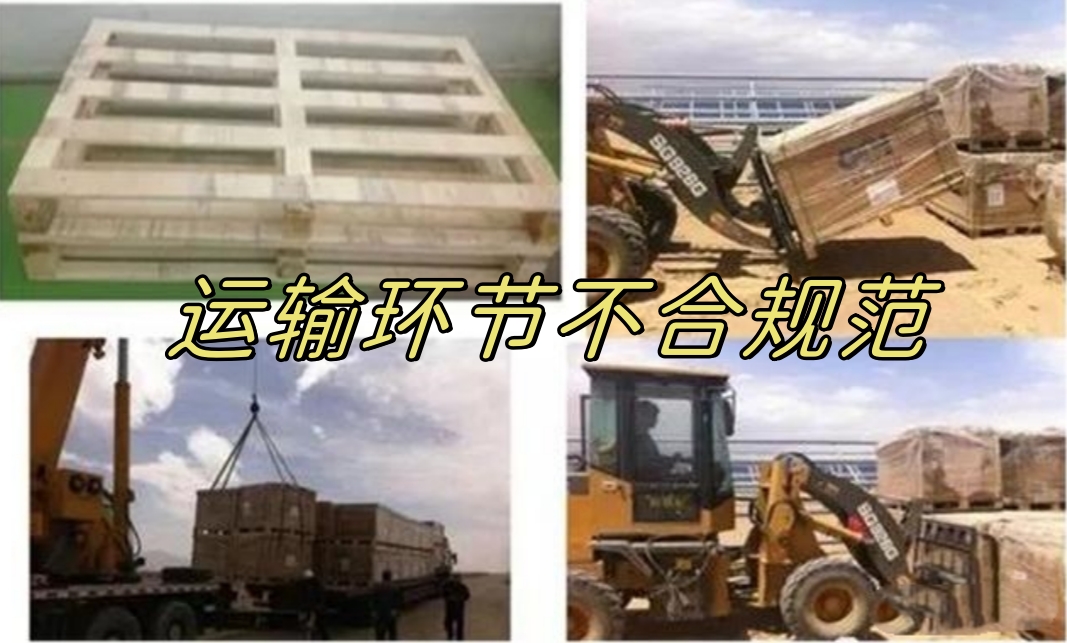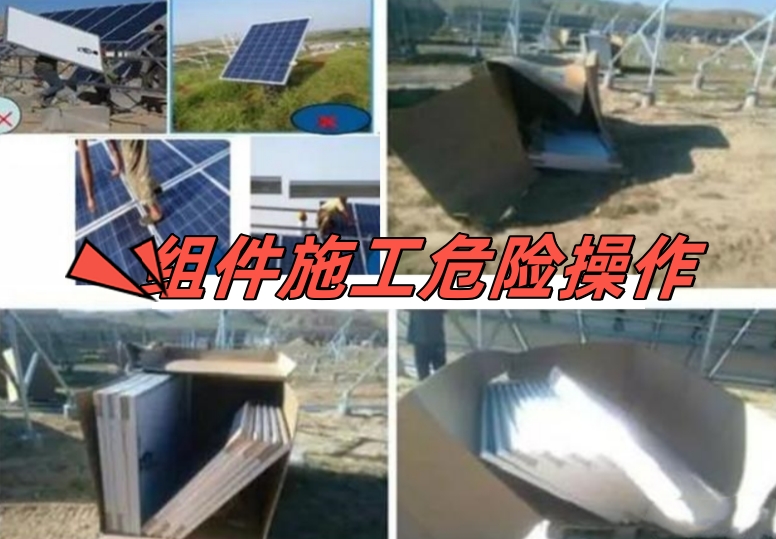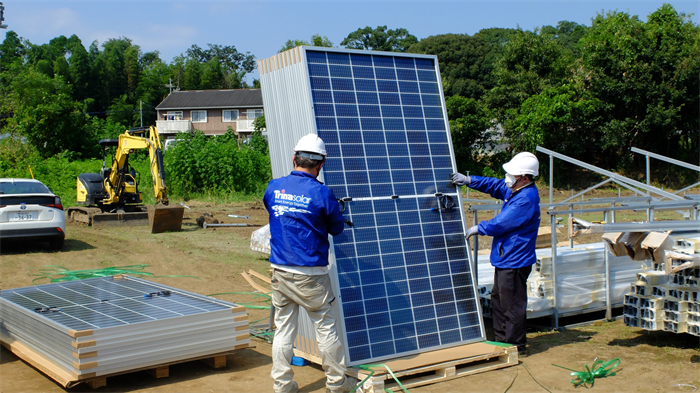How to avoid the "crack" of photovoltaic modules, the three links have their own points.
photovoltaic module refers to the phenomenon that the internal structure of the module is cracked due to external force, vibration and other reasons in the process of transportation and installation.
In recent years, with the rapid progress of process technology, equipment and materials, the factors affecting the performance of crystalline silicon photovoltaic modules, such as cell cracks, hot spots and PID effects, have been greatly improved, especially in the production process of first-line enterprises, 100 percent of the defects of cracks and hot spots can be effectively identified and strictly controlled.
However, in the entire logistics process, improper packaging, transportation, and installation operations will still cause component cracks or even damage. For example, the packing box is tilted, causing the components to squeeze each other and causing uneven stress; Forklift driver's violent loading and unloading, transportation vehicle's sharp bump, secondary transportation, dismantling and replacing the box; Installer's single back assembly, head top assembly; Operation and maintenance personnel stand on the assembly to clean up the dust; The components are stacked randomly, relying on the uneven surface... All kinds of problems will lead to the occurrence of hidden cracks.


how to avoid these problems? Large car according to the packaging, transportation, installation of three links, for everyone to sort out the main points of attention:
[key points of packaging link]]
Shock-proof and drop-proof: The surface of the photovoltaic module is fragile and susceptible to damage caused by impact. Materials with good cushioning properties, such as foam, bubble film, etc., should be selected for packaging to ensure that the product is protected from vibration and falling during transportation.
Waterproof and moisture-proof: Moisture may cause damage to the electronic components inside the product. The packaging should be sealed to ensure that the inside is dry, and waterproof materials should be used for external protection.
Sun protection: Photovoltaic modules are sensitive to ultraviolet rays, and prolonged exposure to the sun may cause performance degradation. The packaging should be made of shading materials, such as black plastic bags or shading cloth, to cover the packaging.
Clear identification: The packaging of photovoltaic products should be accompanied by clear identification, including product name, specifications, production date, shelf life, manufacturer and other information, so that it can be easily identified and managed during transportation and storage.
Lightweight and easy to handle: the packaging should choose lightweight materials as far as possible, and the packaging design should be easy to disassemble and recycle, so as to facilitate handling and reduce transportation costs.
Conform to transportation regulations: The packaging of photovoltaic products should comply with Chinese and international transportation regulations, such as dangerous goods packaging standards, to ensure the safety and compliance of the transportation process.
integrity inspection: After the packaging is completed, a complete inspection should be carried out to ensure that the packaging materials are undamaged and well sealed to prevent damage to the photovoltaic modules during transportation.
[Key Points of Transportation Links]]
rationality: Generally speaking, scientific and professional planning of transportation plan, choosing reasonable transportation mode, batch and line is the most effective way to ensure the delivery quality.
Safety: Photovoltaic products are usually fragile and vulnerable to damage. In the process of transportation, to ensure product safety, to avoid collision, fall and other damage.
Temperature control: Photovoltaic modules are sensitive to temperature, and too high or too low temperature may adversely affect product performance. In the logistics process, it is necessary to ensure the suitability of temperature and avoid high or low temperature environments.
Humidity control: in the logistics process, to maintain a dry environment, to prevent the product moisture.
Avoid strong direct sunlight: prolonged exposure of photovoltaic modules to sunlight may cause performance degradation.
Rapid response: The logistics of photovoltaic products requires timely response and rapid transportation to reduce the stagnation time of products in the logistics link and ensure the freshness and quality of products.
Long-distance transportation: Set up a buffer zone, such as the use of honeycomb panels and other materials for isolation, to reduce the impact of vibration on the components. Reinforce the components to prevent displacement during transportation.
Traceability: Due to the high value of photovoltaic products, it is very important to ensure the traceability of products. In the logistics process, it is necessary to establish a complete information system to track product logistics information in real time so that problems can be quickly located and solved.
[Key points of construction and installation]]
Stacking of components: the stacking site of the whole box of components shall be flat and open to facilitate transportation and operation, and at the same time avoid cracking or damage of components caused by ground skew. The stacking height of the whole box shall not exceed the height of two boxes. Note that the tray should be neat up and down to avoid hanging the corners of the tray. Once in place, try to avoid carrying or moving again.
On-site protection: after the components are neatly placed, the components shall be covered with colored striped cloth and other materials to avoid obvious damage or cracks caused by component tilt or rollover after the site is washed by continuous rain.
Temporary placement: it must be placed neatly on a tray or flat ground, with the first and last glass facing up, the back of the middle component facing up, and no more than 18 flat components allowed. Leaning column or other objects placed, the same need to be placed neatly, supporting objects must be flat without protruding, and should not exceed 10 pieces. Temporary components shall be installed on the day, and the remaining components shall be placed neatly and horizontally or protected to avoid collapse when no one is watching.
Secondary handling: when each component arrives at the installation position, two people are required to carry one component, so as to prevent one person from carrying one or more components, reduce the risk of component release, and reduce the component cracking or damage caused by collision or vibration. After arriving at the installation position, lean on the installed bracket beam to avoid laying on the ground.
Single-box transfer: forklift shall be used for single-box transfer, crane shall be used for water surface projects, and non-conventional mechanical transfer (excavators, loaders, etc.) shall be prohibited.
components: from top to bottom. Avoid temporary fixing with bricks, wooden plugs and other materials between the upper and lower components, and at least two upper bolts shall be used for temporary fixing. The bolts must be fastened firmly, and the spring cushion must be fastened to level. It should be avoided as far as possible that the installation workers directly put their feet on the components to operate, step on, sit and lie down, kneel and press, knock, squeeze and impact the components, which may cause the components to crack due to local stress on the internal battery sheet. When the component is fixed by pressing block, the horizontal plane of the pressing block shall be in firm contact with the component frame to avoid angle.

, it is worth mentioning that front-line photovoltaic enterprises will provide more detailed and professional on-site component crack prevention instruction manuals, videos and other materials. However, for manufacturers, especially overseas orders, many links after product shipment are relatively difficult to control in person. For the consignee, they will also be worried about the delivery quality. Therefore, from product packaging, transportation to construction, choosing professional and reliable freight forwarders, EPC and installers to obtain meticulous and thoughtful service is an effective way to ensure that the products can eventually run without damage and high quality.
